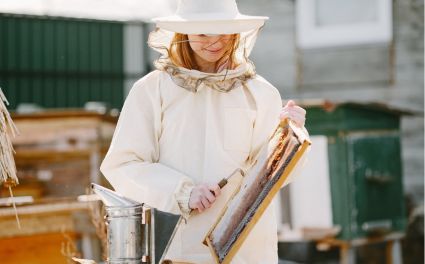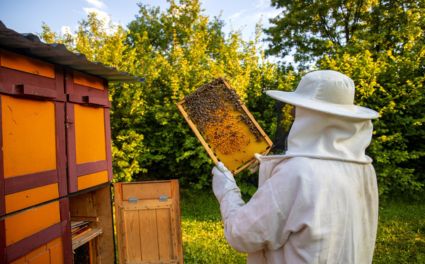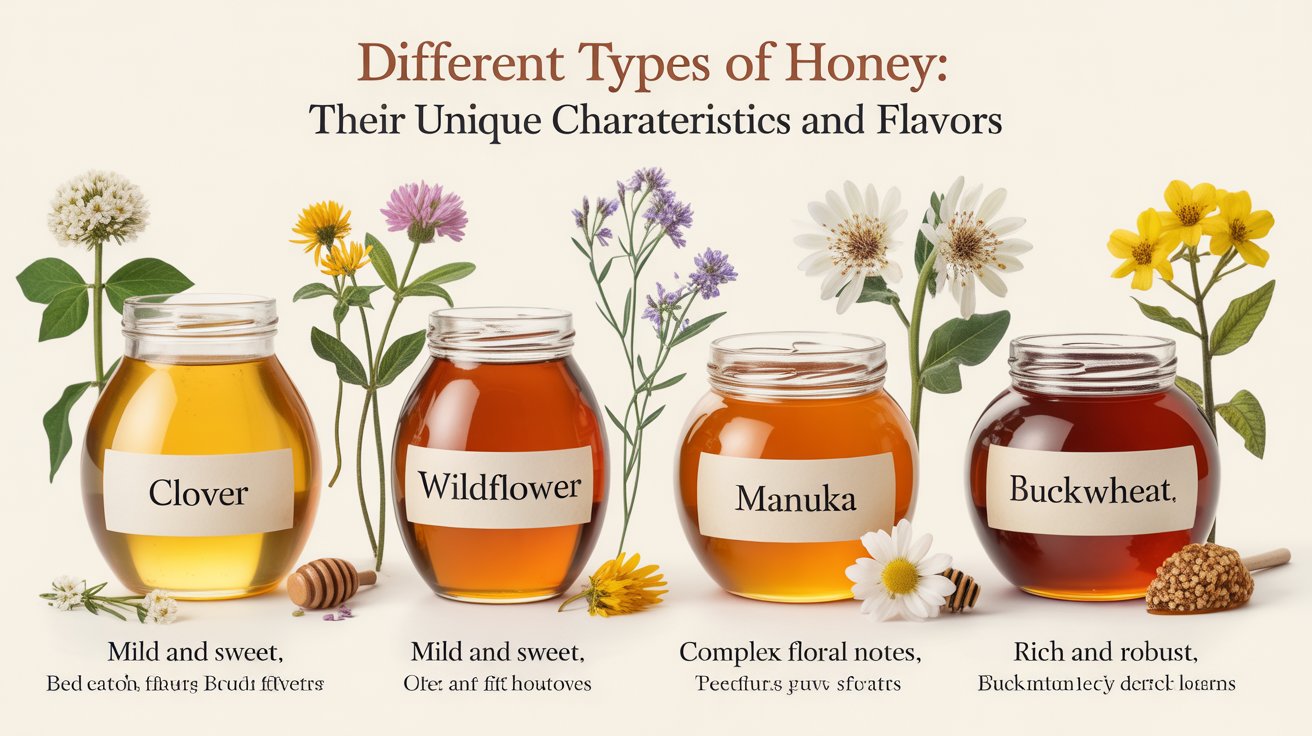Honey — nature’s golden gift — has been treasured for thousands of years for its natural sweetness, health benefits, and versatility. What many don’t realize is that there are many different types of honey, each with distinct flavors, colors, and health properties depending on the flowers the bees visit.
From the mild and delicate Acacia honey to the strong and earthy Manuka honey, every variety offers something unique for your palate and your well-being. Understanding these types not only enhances your appreciation of honey but also connects you to the world of beekeeping and pollination.
🌸 Wildflower Honey
Wildflower honey comes from the nectar of multiple wildflowers and blooming plants in a given area. Because the floral sources vary seasonally, the flavor and color of wildflower honey can change throughout the year.
It often carries a complex, layered taste, sometimes light and fruity, other times deep and aromatic — reflecting the diversity of the local landscape.
Wildflower honey is not just delicious but also rich in antioxidants and beneficial enzymes. It’s ideal for everyday sweetening, drizzling over toast, or pairing with herbal teas.

🌿 Manuka Honey
One of the most famous and potent types, Manuka honey is produced from the nectar of the Manuka tree, native to New Zealand. This dark, rich honey is known for its antibacterial and antimicrobial properties due to its high methylglyoxal (MGO) content.
Its flavor is robust — earthy, slightly bitter, and aromatic. Because of its medicinal benefits, Manuka honey is often used to treat sore throats, support wound healing, and boost immunity.
When purchasing Manuka honey, look for a UMF (Unique Manuka Factor) or MGO rating, which ensures authenticity and potency.
🌼 Acacia Honey
Acacia honey is prized for its pale color and delicate floral flavor. It’s almost transparent, with a smooth and fluid texture that resists crystallization longer than most other honeys.
This variety is harvested from the black locust tree (Robinia pseudoacacia), often referred to as the acacia tree. Its mild sweetness and subtle vanilla undertones make it perfect for sweetening tea, yogurt, and fruit bowls without overpowering natural flavors.
Because of its purity and lightness, Acacia honey is a favorite among chefs and home bakers who prefer a clean, elegant taste.
☘️ Clover Honey
Clover honey is one of the most common and versatile honeys found around the world. Produced from white and pink clover blossoms, it has a pleasant, mild sweetness with soft floral notes and a golden hue.
Clover honey’s gentle flavor makes it the go-to option for those who enjoy traditional honey taste. It’s perfect for baking, marinades, salad dressings, and morning oatmeal.
Its affordability and availability have made clover honey a staple in kitchens globally, while still retaining its natural nutritional value.
🌿 Eucalyptus Honey
Derived from the nectar of eucalyptus tree blossoms, this honey is distinctly aromatic with a refreshing, slightly menthol taste. It’s amber-colored and has a bold, long-lasting flavor that lingers pleasantly on the palate.
Eucalyptus honey is valued for its natural antiseptic and respiratory benefits. It’s often used in herbal remedies for soothing coughs, colds, and sore throats.
This honey’s strong personality pairs beautifully with cheese platters, ginger tea, or even warm lemon water for an immunity boost.
🌾 Buckwheat Honey
Dark, thick, and intensely flavorful, buckwheat honey is a powerhouse among honey types. With deep tones of molasses, malt, and caramel, it has a strong aroma and a slightly tangy aftertaste.
Buckwheat honey is known for its high antioxidant content, making it one of the healthiest choices. It’s particularly effective for boosting immunity, improving digestion, and supporting the body’s natural defense mechanisms.
Due to its bold taste, it’s best suited for glazes, sauces, or as a natural energy source for athletes.
🐝 How Beekeeping Brings Honey to Life
Behind every jar of honey lies the incredible work of beekeepers and their bees. Beekeepers maintain colonies with care, using protective beekeeping suits, jackets, and veils to ensure safe hive inspections and honey extractions.
They rely on a complete set of Beekeeping Equipments — such as smokers, hive tools, and honey extractors — to collect honey without harming the bees. Proper beekeeping gloves and beekeeping trousers add comfort and safety during the process, while ankle protection prevents bees from entering gaps in clothing.
Even young learners can join this craft with beekeeping kids suits designed for safe exploration of the hive world.
Brands like Oz Armour are trusted globally for their quality protective wear — designed for ventilation, durability, and ultimate sting protection. Their innovation ensures beekeepers can focus on their colonies while staying comfortable in any climate.
🧡 Health Benefits Across Honey Types
Each honey variety carries unique nutritional and therapeutic benefits:
-
Manuka honey: Supports wound healing and strengthens immunity.
-
Eucalyptus honey: Relieves sore throats and coughs.
-
Buckwheat honey: Packed with antioxidants for heart health.
-
Acacia honey: Gentle on digestion and ideal for diabetics in moderation.
-
Wildflower honey: Boosts immunity with a mix of diverse pollens.
No matter the type, raw and unprocessed honey retains natural enzymes, antioxidants, and vitamins that promote overall wellness.
🍵 Culinary Uses of Honey
Honey’s versatility extends beyond its sweetness. It’s a natural flavor enhancer that complements savory and sweet dishes alike.
-
Drizzle Acacia honey on fresh fruit and yogurt.
-
Add Buckwheat honey to meats or dark breads for a rich finish.
-
Use Wildflower honey to sweeten tea or homemade salad dressings.
-
Blend Eucalyptus honey into herbal syrups for respiratory relief.
-
Stir Clover honey into coffee or oatmeal for a soft, comforting flavor.
Each type of honey has its own culinary personality — try experimenting to find your favorite.
🌍 Sustainable Beekeeping and Conservation
Honey production depends entirely on healthy bee populations. Supporting responsible beekeeping practices helps preserve biodiversity and ensures that bees continue pollinating crops and wild plants.
Beekeepers worldwide are encouraged to use ethical, sustainable approaches — minimizing stress on colonies and protecting local flora.
Equipping oneself with professional-grade beekeeping gear not only ensures safety but also promotes mindful hive management. Quality gear from brands like Oz Armour supports beekeepers in their mission to produce pure, sustainable honey.

🌻 Final Thoughts
Exploring different types of honey is a journey through nature’s sweetness — from the mild elegance of Acacia honey to the deep richness of Buckwheat honey. Each jar tells a story of floral diversity, bee craftsmanship, and human care.
Whether you’re enjoying honey for its flavor or health benefits, remember that every drop represents the tireless work of bees and beekeepers. For those inspired to learn more about bees, hives, and sustainable practices, explore read more blogs about beekeeping for expert insights and educational guides.
By supporting responsible beekeeping and choosing quality honey, you contribute to a healthier planet — one hive at a time.




